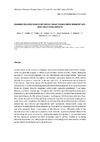Please use this identifier to cite or link to this item:
https://accedacris.ulpgc.es/jspui/handle/10553/17956
| Title: | Evidence for long-term uplift on the Canary Islands from emergent Mio-Pliocene littoral deposits | Authors: | Meco, Joaquín Scaillet, Stéphane Guillou, Hervé Lomoschitz, Alejandro Carracedo, Juan Carlos Ballester Santos, Javier Betancort-Lozano, Juan Francisco Cilleros, Antonio |
UNESCO Clasification: | 24 Ciencias de la vida 2416 Paleontología |
Keywords: | K-Ar Ages Sea-Level Changes Gran-Canaria Oceanic-Island Evolution, et al |
Issue Date: | 2007 | Journal: | Global and Planetary Change | Abstract: | Several islands in the Canarian archipelago show marine deposits with identical fossil faunas, which are generally assigned to different glacioeustatic marine episodes: mainly Pleistocene episodes in Lanzarote and Fuerteventura, and Mio-Pliocene ones in Gran Canaria. Three fossil species (Saccostrea chili, Nerita emiliana and Strombus coronatus) characterize all the marine deposits from southern Lanzarote, to the west and south of Fuerteventura and northeast of Gran Canaria. Three other species (Ancilla glandiformis, Rothpletzia rudista and Siderastraea miocenica) confirm the chronostratigraphic attribution of these deposits. Other more occasional fossils (as Chlamys latissima, Isognomon soldanii and Clypeaster aegyptiacus) fit an upper Miocene and lower Pliocene age. | URI: | https://accedacris.ulpgc.es/handle/10553/17956 | ISSN: | 0921-8181 | DOI: | 10.1016/j.gloplacha.2006.11.040 | Source: | Global and Planetary Change [ISSN 0921-8181], v. 57 (3-4), p. 222-234, (Junio 2007) |
| Appears in Collections: | Artículos |
SCOPUSTM
Citations
48
checked on Jun 8, 2025
WEB OF SCIENCETM
Citations
48
checked on Jun 8, 2025
Page view(s)
312
checked on Sep 27, 2025
Download(s)
321
checked on Sep 27, 2025
Google ScholarTM
Check
Altmetric
Share
Export metadata
Items in accedaCRIS are protected by copyright, with all rights reserved, unless otherwise indicated.
